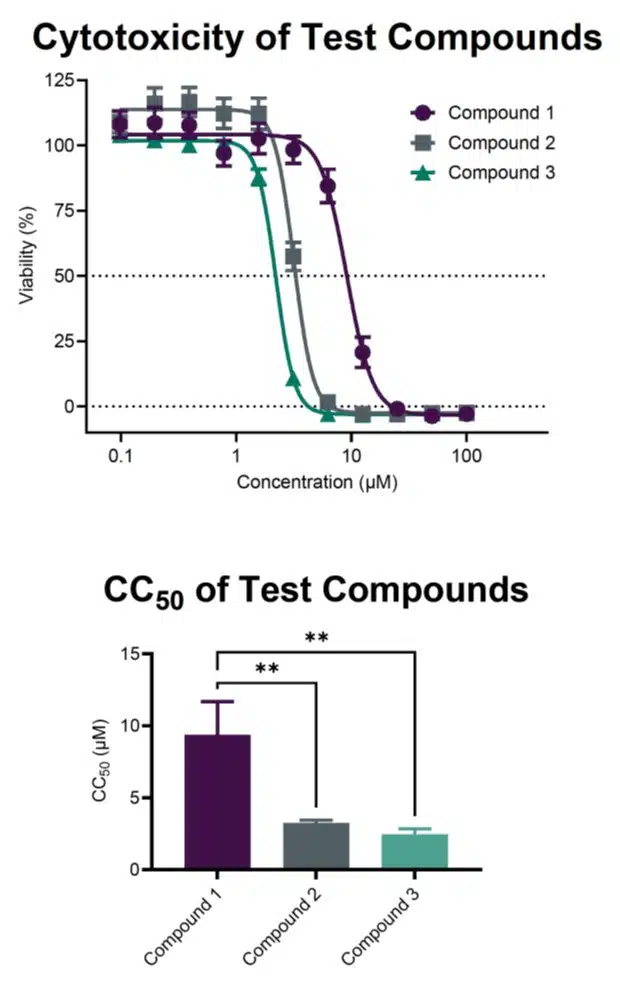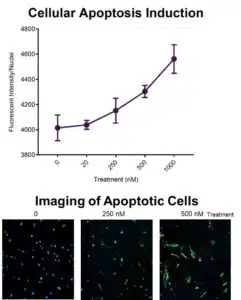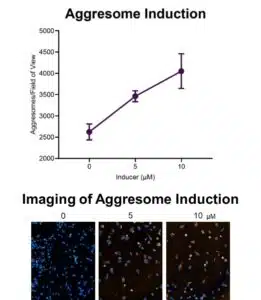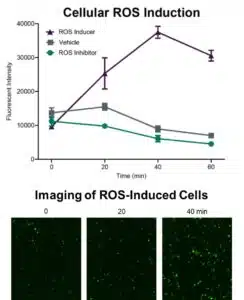
In addition to standard cell proliferation assays, we can create custom cell-based assays based on your needs. UV/Vis, fluorescent, and luminescent assays can be tailored to answer your research questions.
Cell Viability Assays
Cellular respiration is assessed by tetrazolium reduction as a reliable reporter of cellular viability and metabolic activity.
Cell Proliferation Assays
To evaluate cell proliferation, nucleotide analog incorporation can be assessed by downstream click chemistry with a customizable fluorophore.
Cellular Apoptosis Assays
An established cell apoptosis assay uses phosphatidylserine display, an early hallmark of apoptosis, to measure apoptosis initiation via a fluorescent reporter.
Reactive Oxygen Species Assays
Presence of reactive oxygen species (ROS) is measured by addition of a probe that fluoresces upon reaction with intracellular ROS.
Aggresome Formation Assays
A cell-based assay for aggresome formation reflects the cellular response to protein misfolding.
State-Of-The-Art Instrumentation Enables Discovery
Our advanced instrumentation and reliable assays deliver trusted results.
Our collection of cell viability assays are well-established and widely reported. These trusted systems impart context and credibility to your results.
In addition to end-point analyses, our cell viability assays can be imaged by high content analysis to provide high resolution microscopy. Spinning disc confocal provides superb quality images to accompany your graphed endpoints.
Our suite of instrumentation can accommodate custom assay requests. Let us work with you to design reporter assays, high-throughput screens, or other methodologies to meet your unique needs.
Kinetic reads provide information on the temporal progression of cellular responses. Our laboratory is equipped with heated microplate readers for real-time monitoring of dynamic processes.
We can accommodate 384-well plate screening workflows for drug discovery and lead identification. Multimode read capabilities acquire more data from every well.
Your Toolkit for Cell Viability
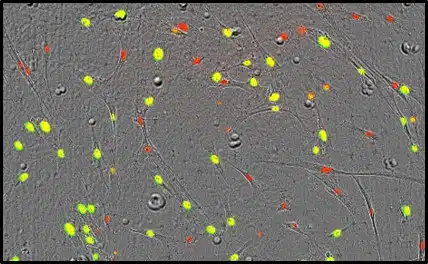
Cell death can proceed by different pathways, and important events are missed when observations are limited by assay availability. Our collection of cell viability assays can differentiate between apoptosis, necrosis, and senescence. We also provide several methods of analysis, including plate reads, microscopy, and flow cytometry. We have the tools to deliver definitive results.
Complementary Assays to Characterize Cell Death
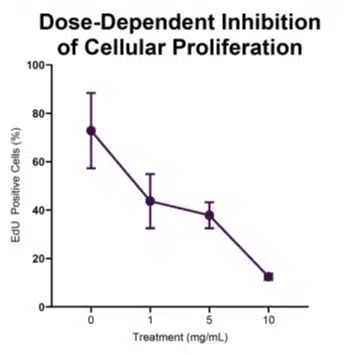
Flexible Fluorophores with Click-iT EdU
For experiments with multiple fluorophores, Click-iT EdU provides options for click-chemistry-enabled labeling, avoiding spectral overlap when multiple fluorophores are used.
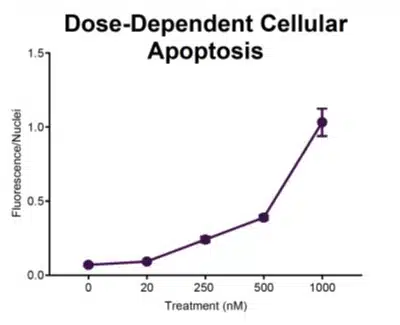
Annexin-V Discriminates Between Apoptosis and Necrosis
An advantage of staining with Annexin-V FITC is that it is specific for apoptosis, providing information on the mechanism of cell death.
Featured Case Studies / Capabilities
Frequently Asked Questions
Read more to find out which assay is best for your project.
Cell viability assays measure the proliferation/metabolic activity of cells, whereas cell apoptosis assays reflect the extent of cell death. These measures often, but not always, inversely correlate.
Ichor’s suite of instrumentation provides several options for assay evaluation. Depending on the assay, we can provide whole-well data, cell-normalized data, high content cell images, flow cytometry and custom readouts.
Yes. Several of our cell viability assays can be used to monitor live cell dynamics in real time, allowing for kinetic data collection.
Our assays can be performed on most cell types. We maintain a collection of standard lines for use in your experiment, and are also happy to use customer-provided cell lines.
